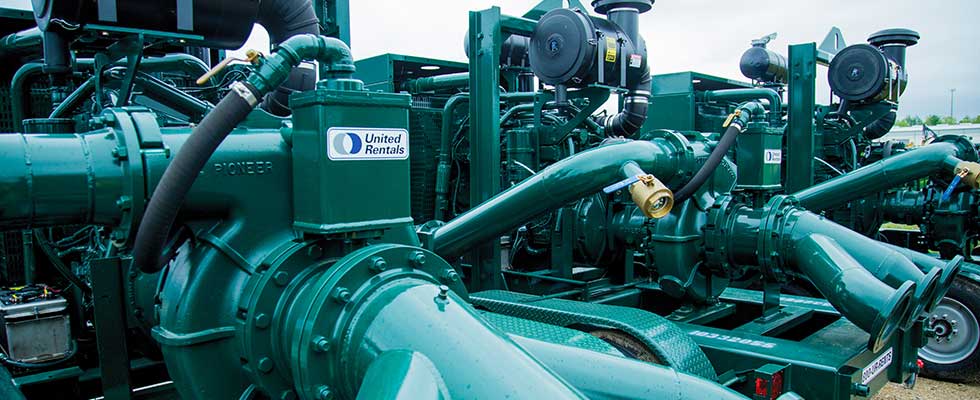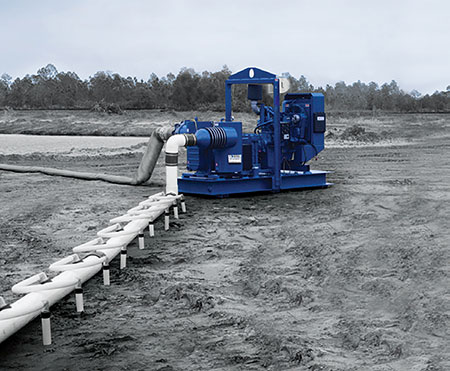
Groundwater and surface water removal is critical in establishing a workable excavation area. It is not always “one size fits all.”
Choosing the appropriate dewatering system for the job and environment will yield the best results in the least amount of time. Here are some considerations for choosing a dewatering system.
1. Know the Available Options
There are several options when it comes to dewatering systems. A wellpoint system is the most popular method for excavations up to 25 feet deep and consists of a shallow well or a series of wells placed strategically around the site. Water is pumped to the surface through a connected pipeline.
Deep well systems consist of drilled wells and leverage electric submersible pumps to move the water out of the work area. Sock dewatering systems use perforated pipes that have been installed with a specially designed trenching machine that lays the socks, typically at a depth of around 20 feet. And finally, open pumping systems include sump dewatering, which is appropriate for shallow excavations or larger amounts of water.
2. Estimate Excavation Depth
Often, the right system depends on the depth of the excavation. For example, wellpoint systems are best suited for dewatering in shallow foundations, utility and trench work. Deep well systems stand true to their name and can work at depths below 26 feet and remove large volumes of water, although it may take longer.
Sock and open pumping systems also work well for shallow excavations but even more than wellpoint, typically between 5 to 15 feet. Both options are great at drawing water fast, but open pumping systems can be built for minimum cost. Plus, they can remove large amounts of water and redirect discharge.

3. Understand the Soil Type
Soil is a serious consideration in selecting a dewatering system design. The geography and ground contents tell a lot about which application to use, but permeable layers reveal which application is possible. Since water cannot be pulled through nonpermeable material, additional components like strata come into play.
For example, a 15-foot excavation in Florida will most likely have sand all the way down; therefore, the wellpoint system rarely has issues with installation or water removal. However, in Mississippi, a 25-foot cut could have 8 to 10 feet of sand followed by a 5-foot clay layer and then another 8 to 10 feet of sand. The application and installation become more complex with a broader range of soil components.
Soil type and materials can also affect the runtime of the dewatering system and, ultimately, the project timeline. Keep in mind that if the soil is coarse, the system can run quickly. If it is fine, it will take longer to dewater.
Ahead of any dewatering job, check geography reports and soil formations to help determine the best system for the job.
4. Filtration & Monitoring
There may be additional environmental regulations depending on the worksite and project, so consider adding a filtration system to treat the pumped-out water before it is discharged to remain compliant. It is best practice to consult with a filtration engineer to help analyze and design a solution to ensure compliance.
If the job requires additional monitoring of the discharged water, consider checking for flow, temperature, pH and turbidity.
There are many factors in choosing the most effective and efficient dewatering system. Consult with an expert for safety best practices and regulatory requirements for each specific dewatering job.

